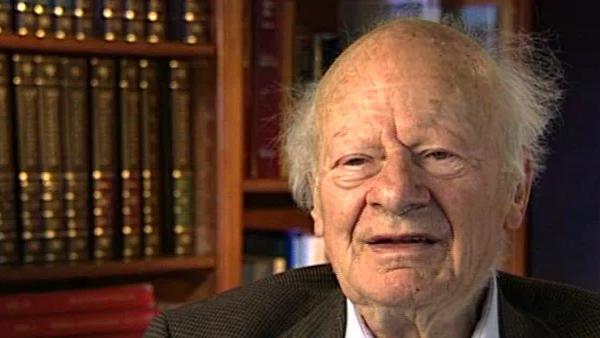NEXT STORY

Kinoshita's work on the extra magnetic moment of the electron
RELATED STORIES

NEXT STORY

Kinoshita's work on the extra magnetic moment of the electron
RELATED STORIES


|
Views | Duration | |
|---|---|---|---|
| 111. CF Powell and the pi meson | 455 | 04:06 | |
| 112. Members of the Cornell Laboratory of Nuclear Studies | 372 | 01:27 | |
| 113. Resonance for neutral pi mesons | 369 | 01:47 | |
| 114. Hoping high energy physics would be the key to nuclear forces | 451 | 02:11 | |
| 115. Work on low energy systems | 390 | 03:56 | |
| 116. The Bethe-Salpeter equation | 538 | 04:23 | |
| 117. Robert Wilson creates the Fermilab | 546 | 01:58 | |
| 118. People moving in and out of the Cornell physics lab | 822 | 02:36 | |
| 119. Kinoshita's work on the extra magnetic moment of the electron | 486 | 02:47 | |
| 120. Nobel prize winners here at Cornell | 593 | 02:16 |


Then there were strong solid state physics on the other side, beginning under Lloyd Smith who had brought me to Cornell, and then under different directors following. The two labs separated but they both were part of the physics department, and the two lab directors wouldn't always see eye to eye and there was a group of three, a steering committee of three people with me as a chairman. And there was a theoretical group being very strong under... immediately after the war with Feynman, then Feynman unfortunately left us because he had too many graduate students, the graduate students took away all his time. And so Bacher who in the meantime had become the Chairman of the Physics Department at Cal Tech, lured him away from here promising him that he would have only as many graduate students as he wanted to have, and lured him to California. Well, we got Dyson for a while in his stead, but unfortunately Dyson also got lured away. Oppenheimer who initially didn't think that Dyson was very good, was now convinced that Dyson was a great physicist and so after a very short time at Cornell, Dyson left and went to the Institute of Advanced Study. We managed to keep a good group in theoretical physics at Cornell, but the... the two real stars, Feynman and Dyson, left because they were lured away to more attractive places.
The late German-American physicist Hans Bethe once described himself as the H-bomb's midwife. He left Nazi Germany in 1933, after which he helped develop the first atomic bomb, won the Nobel Prize in Physics in 1967 for his contribution to the theory of nuclear reactions, advocated tighter controls over nuclear weapons and campaigned vigorously for the peaceful use of nuclear energy.
Title: People moving in and out of the Cornell physics lab
Listeners: Sam Schweber
Silvan Sam Schweber is the Koret Professor of the History of Ideas and Professor of Physics at Brandeis University, and a Faculty Associate in the Department of the History of Science at Harvard University. He is the author of a history of the development of quantum electro mechanics, "QED and the men who made it", and has recently completed a biography of Hans Bethe and the history of nuclear weapons development, "In the Shadow of the Bomb: Oppenheimer, Bethe, and the Moral Responsibility of the Scientist" (Princeton University Press, 2000).
Tags: Cornell University, Caltech, California Institute of Technology, Institute of Advanced Study, Richard Feynman, Lloyd Smith, Freeman Dyson, J Robert Oppenheimer
Duration: 2 minutes, 37 seconds
Date story recorded: December 1996
Date story went live: 24 January 2008